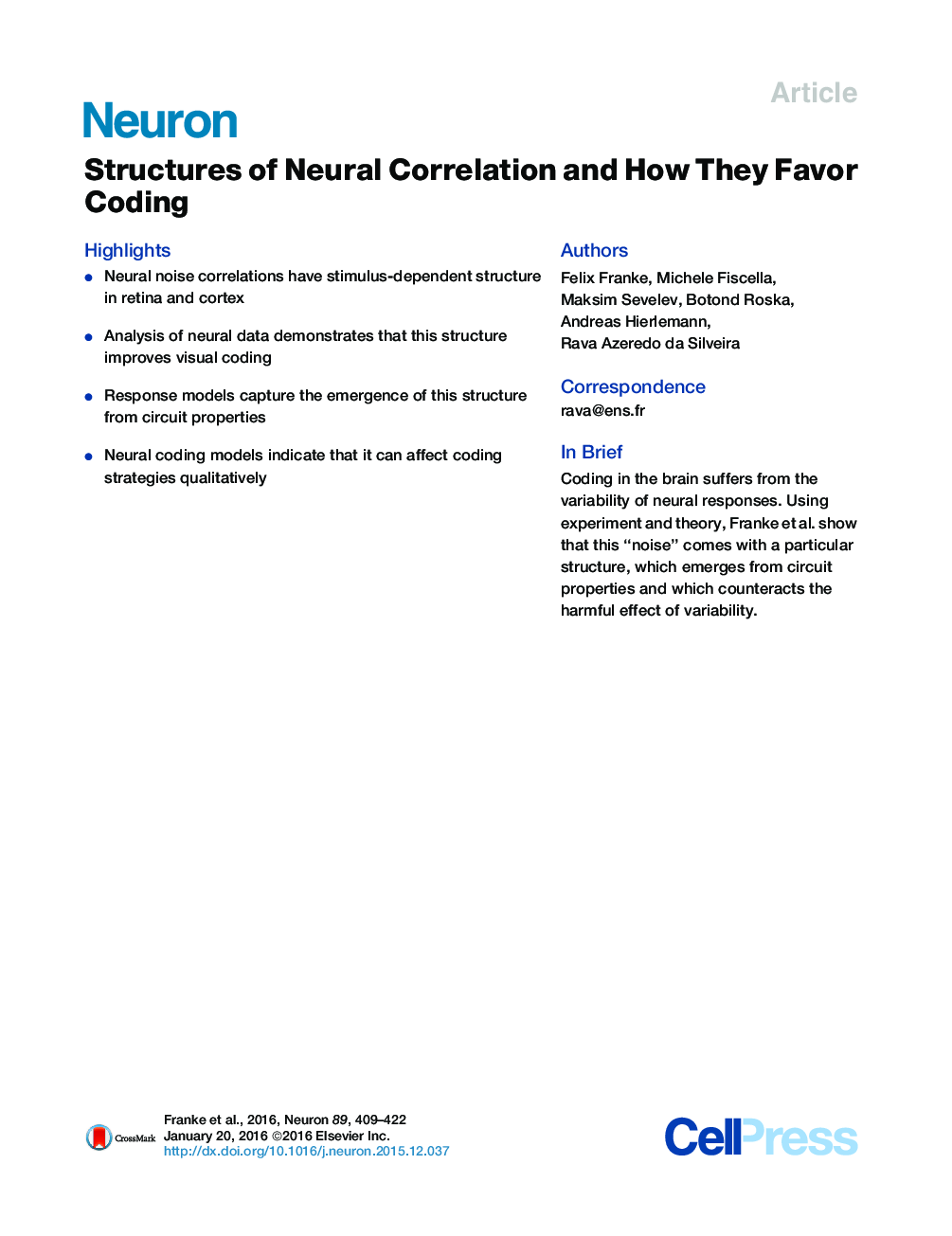| Article ID | Journal | Published Year | Pages | File Type |
|---|---|---|---|---|
| 4320783 | Neuron | 2016 | 14 Pages |
•Neural noise correlations have stimulus-dependent structure in retina and cortex•Analysis of neural data demonstrates that this structure improves visual coding•Response models capture the emergence of this structure from circuit properties•Neural coding models indicate that it can affect coding strategies qualitatively
SummaryThe neural representation of information suffers from “noise”—the trial-to-trial variability in the response of neurons. The impact of correlated noise upon population coding has been debated, but a direct connection between theory and experiment remains tenuous. Here, we substantiate this connection and propose a refined theoretical picture. Using simultaneous recordings from a population of direction-selective retinal ganglion cells, we demonstrate that coding benefits from noise correlations. The effect is appreciable already in small populations, yet it is a collective phenomenon. Furthermore, the stimulus-dependent structure of correlation is key. We develop simple functional models that capture the stimulus-dependent statistics. We then use them to quantify the performance of population coding, which depends upon interplays of feature sensitivities and noise correlations in the population. Because favorable structures of correlation emerge robustly in circuits with noisy, nonlinear elements, they will arise and benefit coding beyond the confines of retina.
